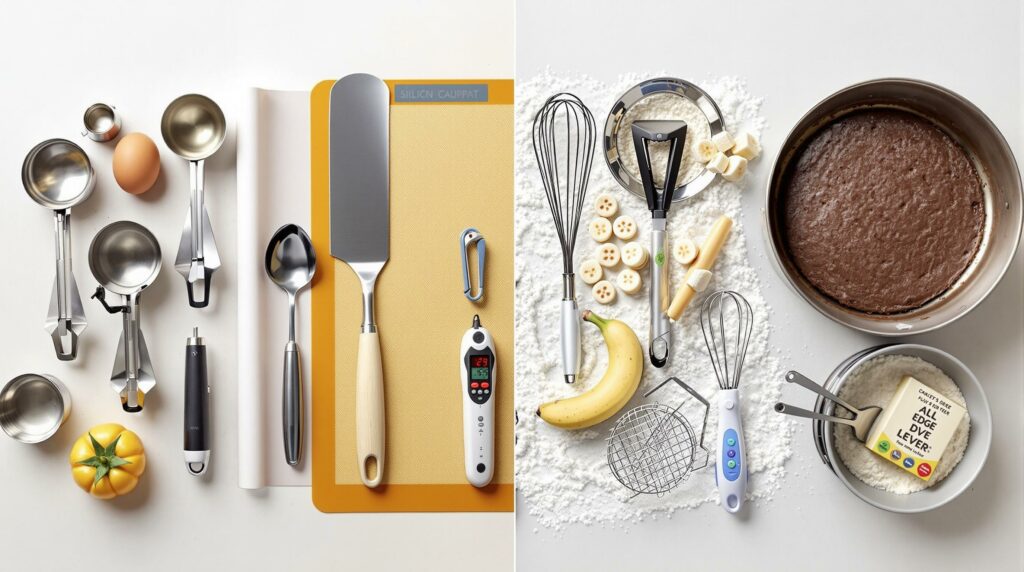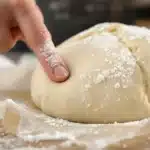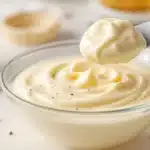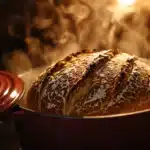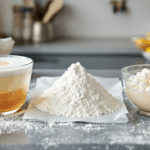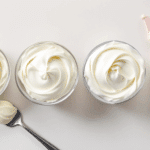Ah, the allure of the kitchen gadget! Wander through any home goods store or browse online retailers, and you’ll be bombarded with an endless array of specialized tools promising to make your baking easier, faster, or more perfect. From oddly specific slicers to high-tech decorating pens, the world of baking gizmos is vast and incredibly tempting, especially for enthusiastic beginners eager to equip their kitchens.
But amidst this sea of shiny objects, a crucial question arises: which gadgets are genuinely helpful additions to your toolkit, and which are destined to become “unitaskers” – single-purpose items that gather dust in the back of a drawer after one or two uses? It’s easy to get caught up in the hype and waste money and precious kitchen space on tools that don’t deliver real value. This guide aims to help aspiring bakers navigate the gadget galaxy, distinguishing between truly useful tools that streamline processes or improve results, and those often unnecessary gizmos that basic techniques or simpler tools can easily replace.
Defining “Gadget”: Beyond the Basics
First, let’s clarify what we mean by “gadget” in this context. We’re moving beyond the fundamental essentials covered previously – your trusty scale, mixing bowls, whisks, spatulas, basic pans, oven thermometer, etc. This guide focuses on those more specialized items often marketed as clever solutions, time-savers, or tools for achieving hyper-specific results.
When evaluating any potential gadget purchase, ask yourself these critical questions:
- Does this tool solve a real problem I consistently encounter in my baking?
- Does it perform a task significantly better, faster, or more consistently than a basic tool I already own (like a knife or spatula)?
- Will I use it frequently enough to justify its cost and the space it takes up in my kitchen?
With those questions in mind, let’s categorize some common contenders.
Genuinely Useful Gadgets (Often Worth Considering)
These are tools that, for many bakers, prove their worth by genuinely simplifying tasks, improving consistency, or enabling specific techniques more effectively than basic alternatives.
- Cookie Scoops (Portion Scoops): Spring-loaded scoops in various sizes (often designated by number or tablespoon capacity).
- Function: Quickly and easily portion cookie dough, muffin batter, or even meatballs into uniform sizes.
- Why Useful: Ensures cookies or muffins are all the same size, which leads to even baking. Much faster and less messy than using two spoons. Different sizes offer versatility.
- Verdict: Very Useful, especially for anyone who bakes cookies or muffins regularly. A small investment for significantly improved consistency.
- Bench Scraper / Dough Scraper: A flat, rectangular blade (usually metal) with a handle.
- Function: Manipulating sticky dough, dividing portions cleanly, cleaning work surfaces.
- Why Useful: Transforms handling wet or sticky dough, allowing you to lift, turn, and fold without adding excessive flour. Makes dividing dough precise and cleaning up quick. A true workhorse for bread bakers.
- Verdict: Highly Useful, arguably essential for frequent bread baking, very helpful for general pastry work.
- Bowl Scraper: A flexible piece of curved plastic.
- Function: Scraping mixing bowls clean, especially thick batters or doughs.
- Why Useful: Gets every last bit out of the bowl more effectively than a spatula, ensuring ingredient accuracy and minimizing waste. Also helpful for gently manipulating dough within the bowl. Inexpensive.
- Verdict: Highly Useful. Small tool, big impact on efficiency and accuracy.
- Pastry Blender: Handheld tool with sturdy wires or blades for cutting fat into flour.
- Function: Efficiently breaks down cold butter or shortening into small pieces while coating them with flour for pastries, biscuits, scones.
- Why Useful: Generally faster and keeps the fat colder than using fingertips or two knives, leading to potentially flakier results.
- Verdict: Useful, particularly if you frequently make pie crusts, scones, or biscuits and find the manual method tedious.
- Rolling Pin with Thickness Rings/Guides: A rolling pin with adjustable rings on the ends that ensure the dough is rolled to a specific, uniform thickness.
- Function: Guarantees evenly thick dough for cutout cookies, pie crusts, or pastry.
- Why Useful: Solves the common problem of uneven rolling, which leads to uneven baking (some parts burnt, others raw). Great for achieving professional-looking results with cutout cookies.
- Verdict: Useful, especially for bakers who struggle with consistent rolling or prioritize perfectly uniform cookies/crusts.
- Silicone Baking Mats (e.g., Silpat): Reusable mats made of fiberglass coated with food-grade silicone.
- Function: Provide a non-stick surface for baking sheets, replacing parchment paper.
- Why Useful: Excellent non-stick properties, easy cleanup, reduces waste from single-use parchment. Can promote even bottom browning by insulating slightly. Durable if cared for properly.
- Verdict: Useful, particularly for frequent bakers (cookies, roasting). Pays for itself over time by saving on parchment.
- Digital Instant-Read Thermometer: Quickly measures internal temperatures.
- Function: Checking yeast liquid temps, internal doneness of breads/cakes, etc.
- Why Useful: Removes guesswork from critical temperature points, ensuring yeast activation and perfectly cooked interiors without dryness. (Reinforcing its value from the Thermometers article).
- Verdict: Highly Useful, borderline essential for reliable bread baking and beyond.
- Pastry Wheel / Cutter: A small wheel on a handle for cutting dough.
- Function: Creates clean, straight (or fluted/scalloped with decorative wheels) cuts in pastry or dough.
- Why Useful: Ideal for cutting lattice strips for pies, ravioli edges, or precise dough shapes. Often easier and cleaner than using a knife for long cuts on soft dough.
- Verdict: Useful for those who frequently make lattice-top pies, filled pastas, or other items requiring precise dough cutting.
- Piping Bags and Basic Tips: Cones (reusable silicone/canvas or disposable plastic) with interchangeable metal or plastic tips.
- Function: Piping frosting onto cakes/cupcakes, filling pastries (éclairs, cream puffs, cannoli), portioning delicate batters (macarons), creating decorative shapes (meringue).
- Why Useful: Essential for most decorating tasks and specific filling techniques. Provides much more control than a spoon or ziplock bag. A few basic tips (medium round, open star, closed star) cover a wide range of uses.
- Verdict: Useful (Essential if decorating or filling pastries is a goal). Start with a basic set.
- Citrus Zester / Microplane: Long, narrow grater with very fine, sharp teeth.
- Function: Removes only the colorful, flavorful outer zest of citrus fruits, leaving behind the bitter white pith. Also great for finely grating hard cheese, nutmeg, or ginger.
- Why Useful: Far superior to a box grater for getting fine, pith-free zest, which adds bright flavor to countless baked goods. Versatile for other kitchen tasks too.
- Verdict: Useful if you frequently use citrus zest in your baking or cooking.
Potentially Useless (or Rarely Used) Gadgets
This category includes items that often sound helpful but are frequently single-taskers (“unitaskers”), easily replaced by basic tools or techniques, gimmicky, or simply don’t provide enough value to justify their cost and storage space.
- Egg Separators: Small gadgets designed to catch the yolk while letting the white pass through.
- Why Often Useless: Learning the simple technique of separating eggs using the shell halves or clean hands is quick, easy, free, and doesn’t require washing another tool. These gadgets can be fussy and sometimes break yolks.
- Verdict: Often Useless.
- Pie Crust Shields: Adjustable rings of metal or silicone placed over the edges of a pie crust during baking to prevent excessive browning.
- Why Often Useless: While edge-burning can be an issue, strips of regular aluminum foil, folded and gently placed over the edges partway through baking, achieve the exact same result effectively and cost nothing extra.
- Verdict: Often Useless (use foil).
- Cake Levelers / Slicers: Usually a wire or blade held in an adjustable frame, designed to cut cake layers horizontally into even layers.
- Why Often Useless: While they promise perfect layers, they can sometimes drag or tear the cake. With a bit of practice, a long, serrated knife and a steady hand (perhaps using toothpicks as guides) can achieve perfectly acceptable results. These tools can also be bulky to store.
- Verdict: Situational. Might be helpful for absolute perfectionists or those with unsteady hands, but often unnecessary for the average home baker.
- Highly Specific Cookie Cutters: Elaborate sets with dozens of shapes related to niche themes.
- Why Often Useless: While fun initially, most bakers find they only regularly use a few basic shapes (circles, squares, stars, hearts) or seasonal favorites (gingerbread person, tree). Huge sets often contain many cutters that rarely, if ever, get used.
- Verdict: Usefulness Varies. Buy individual cutters or small sets of shapes you know you’ll use frequently rather than giant, unused collections.
- Flour Sifters (Crank-Handle or Squeeze-Handle Types): Mechanical devices for sifting flour.
- Why Often Useless: These can be cumbersome, hard to clean thoroughly (trapping old flour), and often less efficient than simply whisking dry ingredients together in a bowl (which aerates and combines effectively) or using a simple, versatile fine-mesh sieve if serious lump removal or aeration is needed.
- Verdict: Often Useless (a whisk or sieve is better).
- Elaborate Decorating Pens / Squeeze Bottle Systems: Tools marketed for intricate icing designs.
- Why Often Useless: Can be difficult to fill cleanly, hard to control flow precisely, and a pain to wash thoroughly. Often, more control and versatility can be achieved with a simple piping bag fitted with a small round writing tip.
- Verdict: Situational. Might have niche uses, but often more fussy than helpful compared to basic piping skills.
- Specialty “All Edge” Brownie Pans: Pans with internal dividers creating individual brownie squares, ensuring every piece has chewy edges.
- Why Often Useless: A novelty item solving a “problem” few people genuinely have. Limits portion size, harder to clean, takes up space for a single-purpose pan.
- Verdict: Gimmicky / Mostly Useless.
- Single-Use Prep Tools (Avocado Slicers, Banana Cutters, etc.): Gadgets designed for one specific fruit or vegetable prep task.
- Why Often Useless (for Baking Prep): Basic knife skills easily accomplish these tasks, making dedicated gadgets redundant clutter.
- Verdict: Useless in a baking context.
- Countertop Electric “Baking” Appliances (Mini Pie Makers, Cake Pop Makers, Mini Donut Makers): Small appliances designed to bake one specific novelty item.
- Why Often Useless: Often produce results that are texturally inferior to traditionally baked versions (more steamed than baked). Limited versatility, take up significant storage space for potentially infrequent use.
- Verdict: Often Useless / Gimmicky.
The “Is It Worth It?” Test
Before clicking “buy” or grabbing that gadget off the shelf, run it through this quick mental checklist:
- Frequency: How often will I realistically use this? (Daily? Weekly? Monthly? Annually?)
- Problem: Does it solve a genuine, recurring problem I have, or just look cool?
- Efficiency: Does it save significant time or effort compared to my current method?
- Results: Will it noticeably improve the quality or consistency of my baking?
- Space: Do I have a convenient place to store it, and is the benefit worth that space?
- Cost: Is the price justified by the value it provides to me?
- Versatility: Can it be used for multiple tasks, or is it a true unitasker? (Multitaskers get bonus points!)
Be honest with yourself during this evaluation!
Conclusion: Gadget Smarts for Savvy Bakers
The world of baking gadgets offers a universe of possibilities, ranging from genuinely ingenious tools that streamline workflows and enhance results, to unnecessary clutter disguised as innovation. The key is to approach this world with discernment. Master your fundamental tools and techniques first – accurate measuring, proper mixing, understanding temperature, using basic knives, whisks, and spatulas effectively.
Once you have a solid foundation, evaluate potential gadgets critically. Does it truly make a frequent task easier or yield significantly better results? Is it worth the cost and storage space? Useful gadgets like cookie scoops, bench scrapers, reliable thermometers, and silicone mats often earn their keep by improving consistency and efficiency. Many others, however, especially unitaskers and novelty items, can often be skipped in favor of basic skills or simpler tools.
Build your essential toolkit first, then add gadgets thoughtfully and purposefully based on your evolving needs, habits, and the types of baking you enjoy most. Don’t let gadget mania clutter your kitchen or drain your wallet – bake smarter, not just with more stuff!

